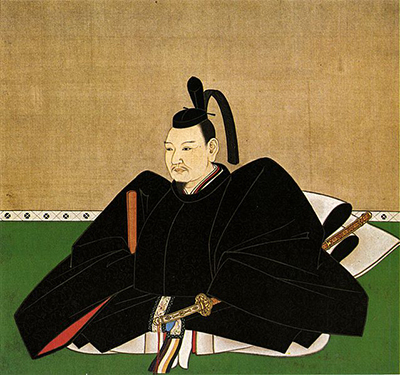
The Daimyo Ruling Class of Japan
When the system of public-land domain fell apart during the 8th century in Japan, private landholding for powerful Japanese came into fruition. Ownership of land was consolidated into estates (shōen) regulated by religious institutions and civil nobility under the scheme provided by the imperial government. This heightened the need for samurai warriors who grew in number throughout the 11th and 12th centuries, giving the military class power and importance among Japanese society. The title daimyo (大名) began to be applied to military lords who exercised territorial and proprietary control over private estates that divided the country at the time.
The 14th and 15th centuries saw the rise of the shugo daimyo (守護大名). They were appointed as military governors under hereditary military dictators. Shugo daimyos were given legal jurisdiction over large provinces and areas. They earned much of their income from taxes levied on cultivated lands of the civil aristocrats and religious establishments. Most of the shogun daimyos were from the Hosokawa, Shiba, Tozama, Akamatsu, and Hatakeyama clans.
Portrait of Hosokawa Masamoto.
The Ōnin war was a major uprising, prompting the shugo daimyos to fight each other. This also gave rise to the kuni ikki (provincial uprising), where powerful warriors sought to gain their independence from shogu daimyos. By the end of the 15th century, shugo daimyos who won remained in their positions and strengthened their hold while those who failed to regain control of their deputies fell from power and were replaced by the shugodai and ji-samurai (lords of smaller rural domains) and even lower officials of the shogunate and ronins. They rose to a new class known as the sengoku daimyo (戦国大名), built their castles in the hill country, and controlled their vassals. Some of the notable sengoku daimyos who were former shugo daimyos were the clans of Shimazu, Rokkaku, Nagao, Amago, Oda, Matsunaga Takeda, Hatano, and Imagawa. Those who rose from the ji-samurai were Mōri, Ryūzōji, and Tamura clans.
 By the 16th century, sengoku daimyos were constantly fighting each other. This resulted in fewer daimyos emerging from local wars and others gaining possession of more and more land. This prompted Oda Nobunaga, one of the major daimyos, to initiate the unification of Japan under the shogunate that had a decisive military conquest continued by Toyotomi Hideyoshi and ended with Tokugawa Ieyasu.
By the 16th century, sengoku daimyos were constantly fighting each other. This resulted in fewer daimyos emerging from local wars and others gaining possession of more and more land. This prompted Oda Nobunaga, one of the major daimyos, to initiate the unification of Japan under the shogunate that had a decisive military conquest continued by Toyotomi Hideyoshi and ended with Tokugawa Ieyasu.
The beginning of the Edo period saw daimyos and their territories organized into domains (han) and were rated based on how much rice they produced and their ties to the ruling Tokugawa family.
Ukiyo-e of Oda Nobunaga. Made by Utagawa Kuniyoshi.
The Meiji Resoration brought about the formation of a new ruling class made up of daimyos and kuge (Japanese aristocrats), called Kazoku. In 1871, domains were abolished and prefectures were established. This brought the end to the daimyo era in the long history of Japan’s ruling classes.

